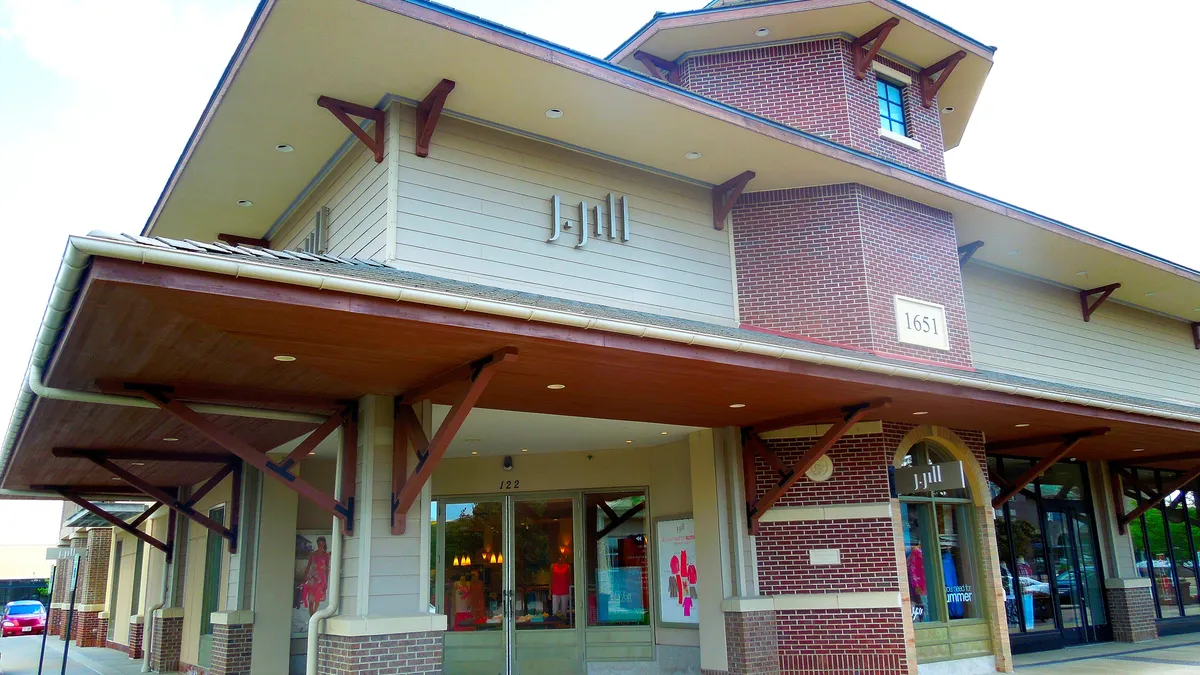Dive Brief:
- J. Jill reported third-quarter sales of $117.2 million, down more than 29% year over year. That represents an improvement over Q2, when the apparel seller's revenue was half of what it was in 2019.
- J. Jill's direct sales increased 4% to make up 63.3% of the brand's overall sales, a sizable increase from the same time last year, when direct sales penetration was 43% of the business, according to a company press release.
- While the company reduced its costs, it still operated at a $24.1 million loss, compared to a nearly $9 million operating profit in Q3 last year.
Dive Insight:
When incoming CEO Claire Spofford takes over next year, she will have a thorough turnaround project on her hands.
Apparel as a sector likely has a long path back to recovery in the COVID-19 era. Plenty of uncertainty remains about when workers will return to offices and consumers will start buying clothes for other social outings. Earlier in December, Moody's sounded a positive note on apparel seller's prospects, with projections of profit rebounds of up to 90% in 2021. But plenty of challenges remain.
J. Jill specifically has been on a rough trip through the pandemic. It dodged bankruptcy this year after the COVID-19 closures led to a massive sales plummet and a financial crisis. J. Jill joined the retailers issuing "going concern" warnings, accounting language that signals to investors they might not be able to remain solvent. The disclosure, which set off a default on a loan covenant, put the company into forbearance with lenders.
Multiple forbearance extensions later, J. Jill produced a deal that would extend debt maturities and boost its liquidity. Without enough support for the agreement, J. Jill would have had to file for Chapter 11, the company said then.
The apparel seller's Q3 shows its challenges are deep and likely to persist for some time. "It is an understatement to say that this has been an unprecedented year for retail and for J.Jill," current CEO Jim Scully said on a conference call, according to a company transcript. "With that said, while our results have yet to show a meaningful recovery as our core customer remains cautious, we are gradually making sequential improvement."
As the company tries to revamp its operating model, it is trying to improve its product assortment, streamline its product flows, reduce its catalog drops (which are expensive), reduce overhead and close unprofitable stores, Scully said. To the latter point, J. Jill closed five stores in Q3, leaving it with a total footprint of 276. For the year, the company could close up to 20 stores.
Spofford, who most recently has served as president for Cornerstone Brands, will likely be taking over those initiatives and taking on the larger existential task of reinvigorating the brand's relationship with its customers and navigating continued economic, pandemic and demand uncertainty for mall-based retailers.
Scully is set to receive a bonus of at least $900,000 for fiscal 2020 as well as a transition bonus next year, according to securities filings.















